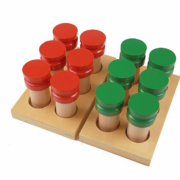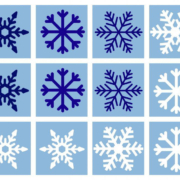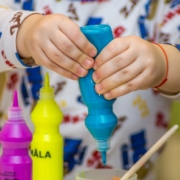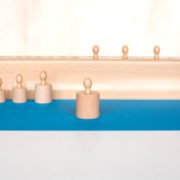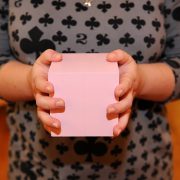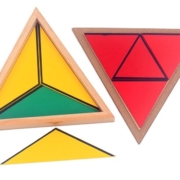Sensorial: Binomial Cube
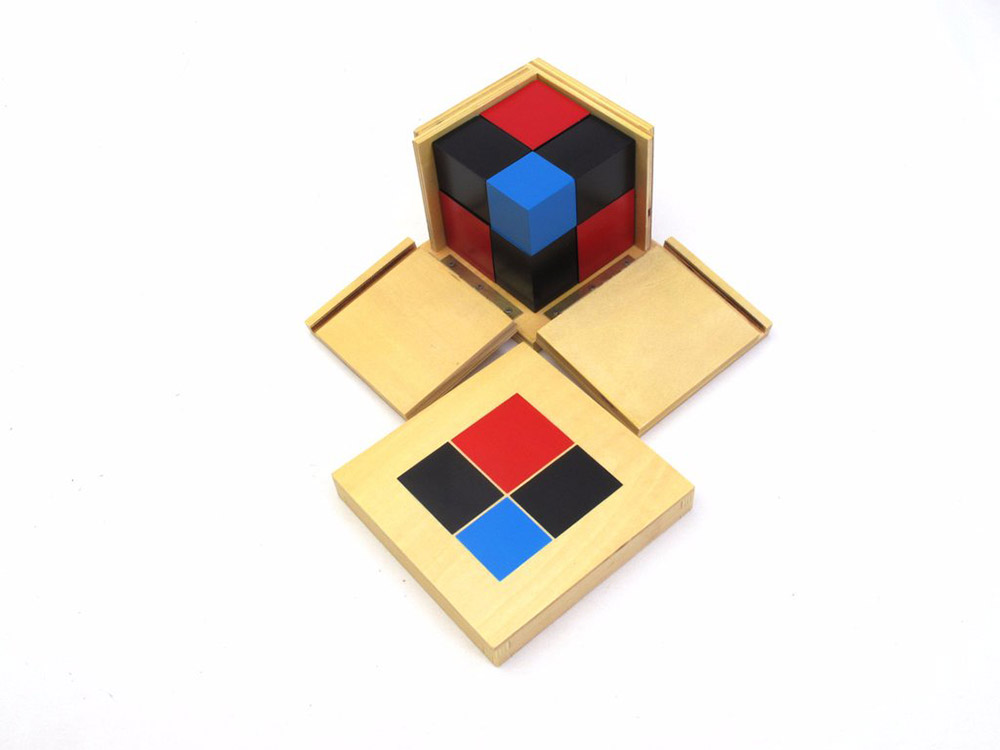
The binomial cube is like a puzzle; broken up into many different pieces of varying colour and sizing. Once assembled, it forms a cube of a binomial (a+b)3 – the direct purpose of the activity is to build the cube (by using skills such as patience and logic) but it also serves as preparation for mathematics (algebraic equation of binomial) encountered at a later stage in learning. Have a look at the below tutorial to see how a directress might present the binomial cube by My Montessori Works:
What you’ll notice in the video is that the binomial box includes one red cube, along with three red and black matching prisms, as well as one blue cube, along with three blue and black matching prisms. The red cube scheme is always built first. The idea is to show children how the pieces match as per colour and size, and then encourage them to do the puzzle their own.
When a child is attempting the cube without your help, it’s important to allow her to figure it out alone. The video reminds us that the process of puzzling out the schemes of the cube is about self-discovery as opposed to getting the answer right! Learning is facilitated by self correction, which nurtures understanding.
If a child is struggling with the cube, the best thing to do is to ask questions in an effort to guide the learning process – for example, “What colours is that?” or “Are those pieces the same height?” Only if a child is frustrated would you offer help but always in the form of a question, which gives the child control over the process (the choice to accept your help or to have another go alone).
The more familiar children become with the apparatus, the more confident they are in their use of it; and they will be so proud when they do manage to work out the puzzle.
If you’d like further information about this tutorial, feel free to contact us at info@saintandrewsmontessori.com. We’re happy to answer any questions.

